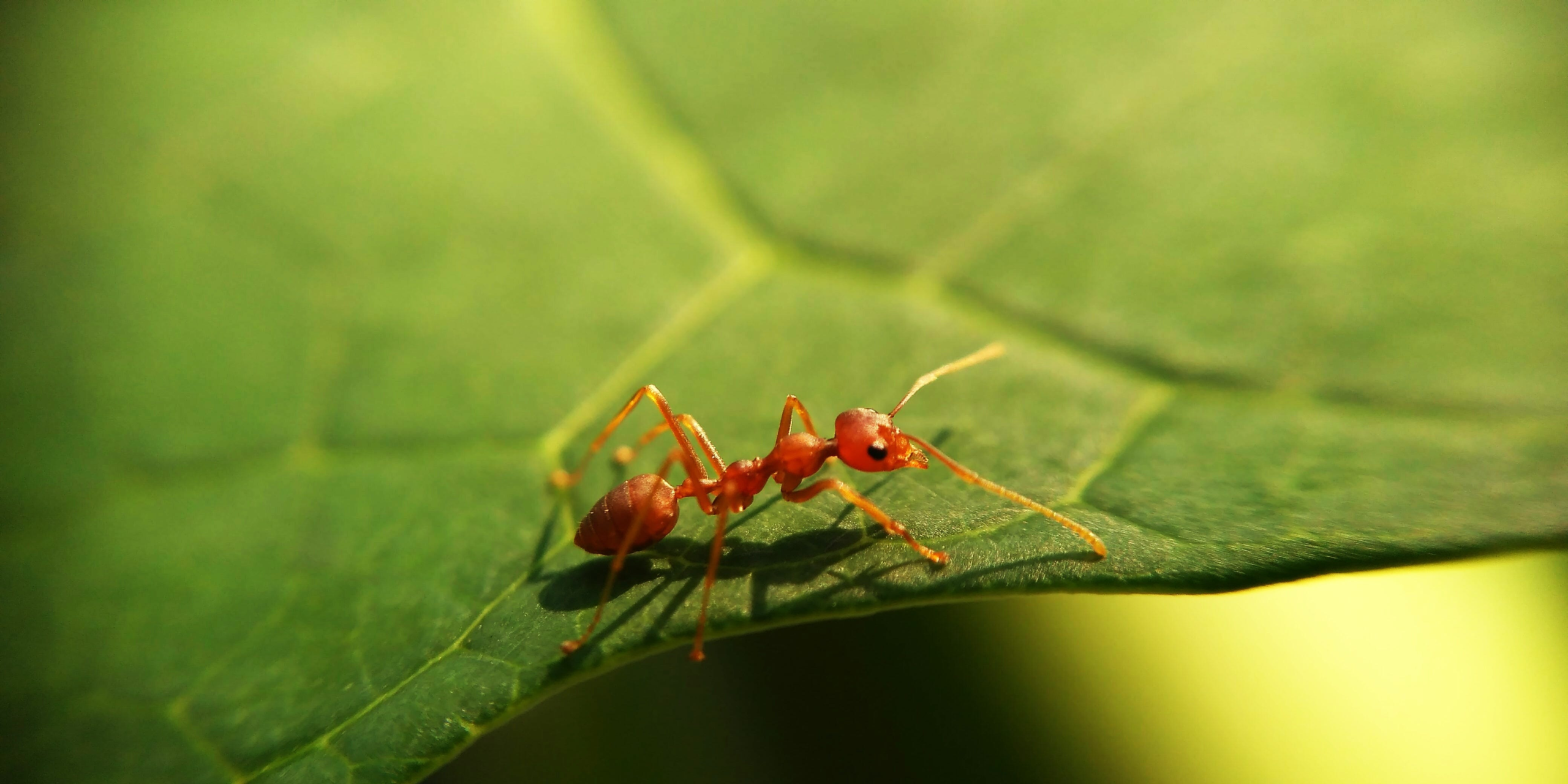We may earn commission from links on this page, but we only recommend products we back. Why trust us?
Ants do bite—here’s how to avoid an unfortunate encounter (and handle it if and when you do get bitten).
Spring is in the air! As the sun shines for longer hours and the trees and flowers start to bloom, numerous insects will re-emerge after a long winter. While coming in contact with butterflies and ladybugs can be exhilarating (and likely be deemed Instagram-worthy moments!), getting too close to other creatures found in Mother Nature—like ants—can actually be troublesome, and they have the potential to bite, too. It’s not just tick bites and mosquito bites you need to worry about! Here’s what you need to know about ant bites, including symptoms, what they look like, and prevention strategies.
There are many different ants that make various types of venoms. And although ants have strong jaws and teeth (referred to as mandibles) and can bite when feeling threatened, ant bites are technically stings—and the insects that do this are known as fire ants, explains Delphine J. Lee, M.D., chief of dermatology and residency program director at Harbor-UCLA Medical Center and the Director for the Dermatology Service Line for the Department of Health Services for Los Angeles county.
According to the Center for Agriculture and Bioscience International (CABI), a non-profit, inter-governmental organization that focuses on agricultural and environmental issues, there are two types of imported fire ants in the United States:
Fire ants are between 1/8 to 1/4 inches in length, tend to be associated with large mounds that measure up to 12 inches high and 18 inches wide, and nest in moist, grassy environments (such as ponds, riverbanks, and irrigated lawns) in warmer climates that don’t deal with frigid winter temperatures, states the non-profit organization Allergy & Asthma Network.
Furthermore, the Extension Foundation, which is in partnership with the U.S. Department of Agriculture, reports that fire ants mostly inhabit the Gulf Coast and southeastern states, including: Alabama, Arkansas, Florida, Georgia, Louisiana, Mississippi, North Carolina, Oklahoma, South Carolina, Tennessee, and Virginia. These bugs can also be found living in parts of California, New Mexico, Texas, and Puerto Rico, while occasionally being spotted in Kentucky, Maryland, and Missouri.
These ants tend to go on the attack usually after their nest has been disturbed. As it injects the venom through the stinger, each ant bites at an average of seven to eight times while rotating its body in a circular pattern, according to a review written by the Mayo Clinic and published in StatPearls, the world’s largest library of peer-reviewed articles.
The end result: “Pain, swelling, and redness, with maybe a white tip at the end of the red bump, known as a pustule,” adds Dr. Lee.
The most common reaction is feeling an intense burning sensation, followed by itching and a raised, red welt on the skin that lasts for approximately four to six hours, states the American Osteopathic College of Dermatology (AOCD). Other typical symptoms include painful, pus-filled blisters that can last for three to eight days, along with a scab that forms at the bite site which can remain on the skin anywhere from three to ten days, reports University of Florida Health.
“While less common, some will develop a larger reaction, such as similar features covering a larger surface (perhaps about ten centimeters or the size of a palm) and may last longer than 24 hours,” adds Dr. Lee.
However, she warns that not everyone will experience a localized reaction. “The venom can cause an allergic reaction, leading to the appearance of a red bump at the site of the sting typically within one to four hours,” continues Dr. Lee. “Plus, some people will get hives and severe itching—and most severely can have anaphylaxis, which is a medical emergency.”
Also known as anaphylactic shock, symptoms present within 30 to 40 minutes of the bite and are life threatening if not treated immediately. “If anyone develops trouble breathing or swallowing, and/or weakness or fainting after ant bites, they should seek emergency medical care,” stresses Dr. Lee.
For those dealing with a typical reaction, she advises washing the area with soap and cold water—and to avoid scratching. “If the sting site is itching severely—and there are no other symptoms—you could consider taking an over-the-counter antihistamine, as well as applying an over-the-counter anti-itch cream with hydrocortisone.” (Dr. Lee cautions that diphenhydramine, an antihistamine used to treat rash and itching caused by insect bites and burns, can cause drowsiness “so don’t take before driving or any activity that requires you to be wide awake.”)
Pain and swelling can be minimized with cold compresses. Larger, localized reactions may need to be treated by a physician, who may prescribe a steroid ointment and/or an oral corticosteroid, such as prednisone, recommends the AOCD.
As for how to keep fire ants at bay, the most effective strategy is to be aware of your surroundings. “Ant bite prevention basically requires avoidance of ants, including decreasing the ant population in your home or yard with insecticide (or if there are some natural remedies claiming to repel ants),” states Dr. Lee. The medical review published in StatPearls suggests staying away from dirt ant mounds, along with tucking pants into socks or boots when spending time in high-risk areas.
“For anyone with known allergies or anaphylactic reactions to insect bites, ask your doctor if it’s appropriate for you to carry prescription devices for self-injection of epinephrine in case of emergency,” adds Dr Lee.
